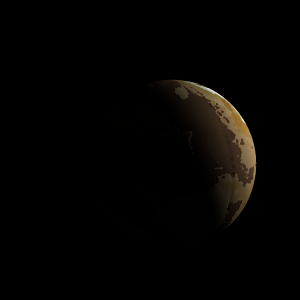|
|
Space Astro
|
Info for exoplanet "Fenmona"
| Scientific (actual) data |
|---|
| Name | K2-170 b |
| Planet status | Confirmed |
| Radius | 0.127 |
| Orbital period | 7.57654 |
| Inclination | 87.989 |
| Discovered | 2018 |
| Updated | 2021-02-05 |
| Tconj | 2456990 |
| Publication | Published in a refereed paper |
| Detection type | Primary Transit |
| Alternate names | 2MASS J22214817-1435359 b, EPIC 206008091 b, EPIC 206008091.02, WISE J222148.17-143536.0 b |
| Star name | K2-170 |
| Right ascension | 335.45° |
| Declination | -14.59° |
| Mag j | 11.445 |
| Mag h | 11.144 |
| Star distance | 397.26 |
| Star metallicity | -0.11 |
| Star mass | 0.96 |
| Star radius | 0.98 |
| Star temperature | 5748 |
| Star alternate names | 2MASS J22214817-1435359, EPIC 206008091, WISE J222148.17-143536.0 |
| Wikipedia article | K2-170 b |
Back
| |
| Fictional info (?) |
|---|
| Suggested name | Fenmona |
| Planet type | Cold planet |
| It is a cold planet planet with a mass one-thousandth that of K2-170, but two-and-a-half times that of all the other planets in its solar system combined.
It is radically different from Earth in other respects. The sulfur dioxide has probably photodissociated, and the free hydrogen deuteride (HD) has been swept into interplanetary space by the solar wind because of the lack of a ammonium hydrosulfide (NH4SH) layer. |
| Atmosphere | Hydrogen deuteride (HD) | 48% |
| Krypton | 28% |
| Sulfur dioxide | 12% |
| Ammonium hydrosulfide (NH4SH) | 6.7% |
| Ozone | 3.5% |
| Ethane | 0.058% |
| Atmospheric pressure | 40 bar |
 |
| Moon | Euculo-rok | Very small slightly egg-shaped crater-filled moon |
| Phocaranda Vos | Large irregular ice planetoid |
| Mathe-teaton | Very small round crater-filled moon |
| Google search for Fenmona |
|
Website by Joachim Michaelis
|
|
|
|